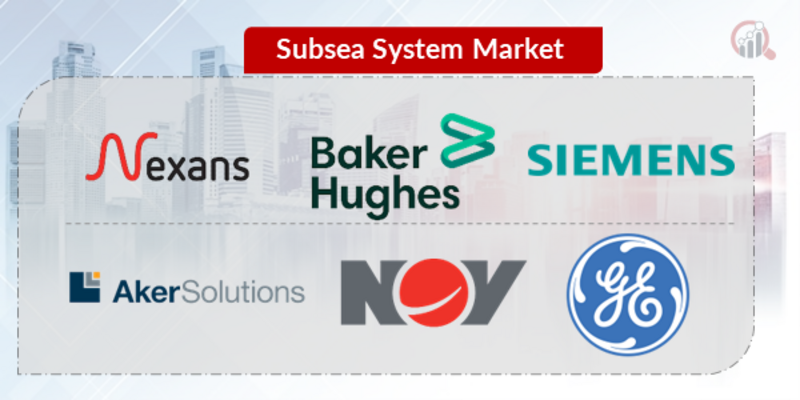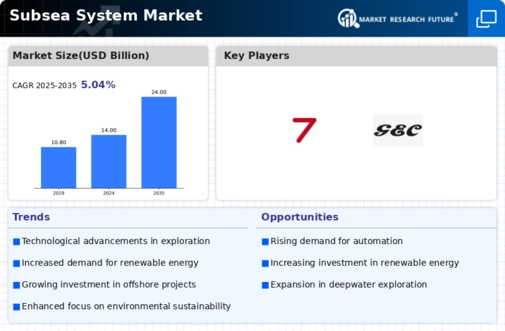Top Industry Leaders in the Subsea System Market

*Disclaimer: List of key companies in no particular order
The global subsea system market, a critical component in the energy extraction domain, plays a pivotal role in exploring, developing, and producing resources beneath the ocean's surface. In this comprehensive exploration, we delve into the competitive landscape, scrutinize key player strategies, analyze market share factors, uncover emerging trends, and provide insights into the overall scenario.
Key Player Strategies:
The competitive landscape of the subsea system market features influential players, including:
Market Leaders:
Leading the market are OneSubsea Schlumberger, Subsea7, Aker Solutions ASA, and TechnipFMC, distinguished by their diversified offerings, global reach, and robust technological expertise. Their strategies focus on:
- Integrated Solutions: OneSubsea Schlumberger's SUBSURF portfolio and Subsea7's iSURF solution provide comprehensive packages, streamlining projects and enhancing efficiency.
- Technological Innovation: Aker Solutions' commitment to digitalization and automation, exemplified by its AkerOS suite, aims to optimize field operations and improve efficiency.
- Geographical Expansion: Subsea7's acquisition of Seaway7 in 2022 strengthens its foothold in offshore wind energy, diversifying its portfolio and tapping into a promising market.
Niche Players:
Companies like EniSpa, Norwegian Innova, and Nexans S.A. excel in specific niches. EniSpa's expertise in high-pressure gas pipelines, Norwegian Innova's focus on subsea robotics, and Nexans' robust cable manufacturing capabilities cater to distinct market needs.
New Entrants:
Smaller players such as Xodus Group and OceanIQ are disrupting the market with innovative approaches. Xodus' data-driven solutions for predictive maintenance and field optimization and OceanIQ's digital twin technology offering real-time insights are gaining traction.
Market Share Analysis:
Factors influencing market share include:
- Project Portfolio: Companies with diverse projects across regions, like OneSubsea Schlumberger and Subsea7, hold a competitive edge.
- Technological Prowess: Early adoption and integration of advanced technologies such as data analytics, robotics, and automation are crucial for differentiation.
- Cost Competitiveness: Efficient project execution, optimized supply chains, and cost-effective solutions are vital for securing lucrative contracts.
- Sustainability Focus: The emphasis on green energy is pushing companies towards environmentally friendly solutions, as seen in Subsea7's focus on electrification and emissions reduction.
Emerging Trends and New Frontiers:
Several trends are reshaping the competitive landscape:
- Digitalization: Real-time data, integrated platforms, and AI-powered solutions are transforming project management, maintenance, and optimization.
- Robotics and Automation: Unmanned underwater vehicles (UUVs) and autonomous subsea systems are enhancing safety, efficiency, and cost-effectiveness.
- Renewable Energy: Increasing investments in offshore wind farms are creating new opportunities for subsea infrastructure and expertise.
- Focus on Local Content: Local content requirements in emerging markets are pushing players to collaborate with regional entities and establish local footprints.
Overall Competitive Scenario:
The subsea system market is undergoing a dynamic shift, with established players facing challenges from niche experts and innovative newcomers. While technological prowess and project portfolio remain important, adapting to emerging trends like digitalization, automation, and sustainability will be critical for success. Collaborations, strategic acquisitions, and a focus on regional partnerships will also play a crucial role in navigating the shifting currents of this complex market.
Industry Developments and Latest Updates (Company-Specific):









